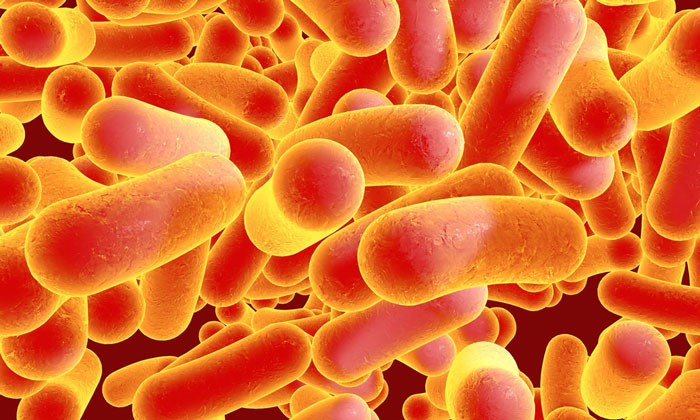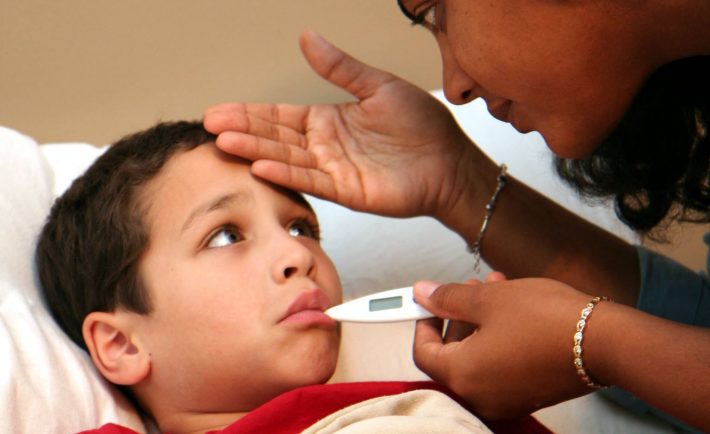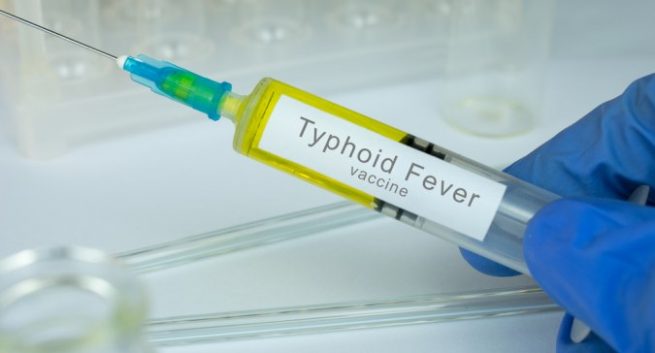Typhoid fever, also known as slow fever and enteric fever or simply typhoid, is an acute bacterial infection caused by the Salmonella enterica Typhi bacteria. Salmonella paratyphi, a related bacterium, can also cause a less severe illness.
The Salmonella bacteria are deposited in the water or food by a human carrier and are then spread to other people through water/food consumption or close contact to infected person. This waterborne disease rarely occurs in industrialized countries but poses serious health threat in the developing countries especially children.
The signs and symptoms mostly include headache, high fever, abdominal pain, and constipation/diarrhea. Most of the people suffering from typhoid fever get better within a few days of starting antibiotic treatment. But some people may have complications, that may even lead to their death.
The vaccines against typhoid fever are available but are not much effective. They are usually reserved for those with exposure to the disease or are traveling to areas where typhoid is prevalent.
Learn about its causes, symptoms, complications, prevention, diagnosis and treatment here.
Causes

The typhoid fever is caused by the bacteria Salmonella typhi (S. typhi). Though S. typhi and the bacteria responsible for salmonellosis are related, they are not same. Fecal-oral transmission route or typhoid carriers can cause the illness.
The bacteria causing the typhoid fever spread through contaminated food and water. And in certain cases, they spread through direct contact with an infected person. In the developing countries where typhoid fever is widespread, most of the cases occur from contaminated drinking water and bad sanitation. Most people in the industrialized countries become infected by typhoid bacteria as they travel and spread it to others through fecal-oral route.
Despite the treatment, some people recovering from typhoid fever bear the bacteria in their intestinal tracts or gallbladders, for many years. These people are the chronic carriers who shed the bacteria in feces and can infecting others even if they do not show any signs or symptoms of the illness.
Signs & Symptoms

The incubation period is mostly one to two weeks and the illness lasts for about three to four weeks. The symptoms may include:
- Diarrhea or constipation
- Headaches
- Rash
- Poor appetite
- Sweating
- Muscle ache
- Weakness and fatigue
- Generalized aches and pains
- High fever
- Dry cough
- Lethargy
- Abdominal pain and swelling
In many people, chest congestion develops and abdominal pain and discomfort are common. They feel better in the third and fourth week in case of people with no complications. Nearly 10% people experience recurrent symptoms after they feel better for 1-2 weeks. Relapses are more common in individuals who are given antibiotics treatment.
Complications
The most serious complications of typhoid fever are intestinal bleeding or perforated intestine. They may develop in the third week of illness. The perforated intestine is a condition that takes place when your small intestine or large bowel develops a hole. This causes the intestinal contents to leak into your abdominal cavity and trigger symptoms (including nausea, bloodstream infection, sepsis). This life-threatening condition requires immediate medical treatment.
The other possible and less common complications are myocarditis, pancreatitis, meningitis, pneumonia, endocarditis, kidney or bladder infections and psychiatric problems.
With immediate treatment, most people in the industrialized countries recover from typhoid fever. Without treatment, some people may not survive its complications.
Diagnosis
After drinking polluted water or eating contaminated food, the Salmonella bacteria enter the small intestine and then the bloodstream. The white blood cells carry the bacteria in the spleen, liver and bone marrow where they multiply and enter the bloodstream again.
The people tend to develop symptoms at this stage. The bacteria invade the gallbladder, biliary system and lymphatic tissue of the bowel. After the bacteria passes into the intestinal tract, the bacteria passes into the intestinal tract and can be identified in the stool samples. If a test result comes unclear, the blood or urine samples might be required to carry out a diagnosis.
Treatment

The only effective way of treating typhoid fever is antibiotic therapy. The commonly prescribed antibiotics are Ciprofloxacin (Cipro) and Ceftriaxone (Rocephin). Ciprofloxacin is often prescribed to men and non-pregnant women. Ceftriaxone is an alternative injectable antibiotic for children. These drugs may cause side effects and their long-term use can result in the development of antibiotic-resistant strains of bacteria.
Other treatments:
-
Drink fluids to help prevent the dehydration that happen due to a chronic fever and diarrhea. If you feel severely dehydrated, you may need to take fluids through a vein (intravenously).
-
If your intestines becomes perforated, you will require surgery to repair the holes.
Preventions

In several developing countries, the public health goals preventing and controlling the illness can be hard to achieve. These health goals include potable water, improved sanitation and good medical care. That’s why some experts believe that administering vaccinations to the high-risk population is the best way of controlling typhoid fever.
The two types of available injections:
- One injection is injected in one dose at least 1 week before travel.
- Other is given 4 capsules orally in which 1 capsule is supposed to be taken every other day.
Neither of the vaccines is 100% effective and they both require recurrent immunizations as the effectiveness of the vaccines becomes less over time. And as the vaccine would not provide complete protection, just follow these guidelines when you travel to high-risk areas:
- Do not drink untreated water
The contaminated water is a specific problem in the areas where typhoid fever is widespread. So drink only bottled water or canned/bottled carbonated beverages. The carbonated bottled water is much safer to drink that non-carbonated bottled water.
- Make sure you wash your hands frequently
It’s recommended to wash your hands in hot, soapy water for controlling the infection. Wash your hands before eating, preparing food and after using toilet. Also, it is best to have an alcohol-based hand sanitizer along with you when water is not available.
- Take drinks without ice
Never swallow water in the shower and always use bottled water to brush your teeth.
- Prefer hot foods
You should just foods stored or served at room temperature. Steaming hot foods are great for health. Also avoid food from street vendors.
- Do not eat raw fruits and vegetables
As raw produce may have been washed in polluted water, avoid fruits and vegetables that cannot be peeled. So it is recommended to avoid raw foods.
Image Source:
1) cloudfront
2) getdoc
3) water-purifiers
4) thehealthsite

